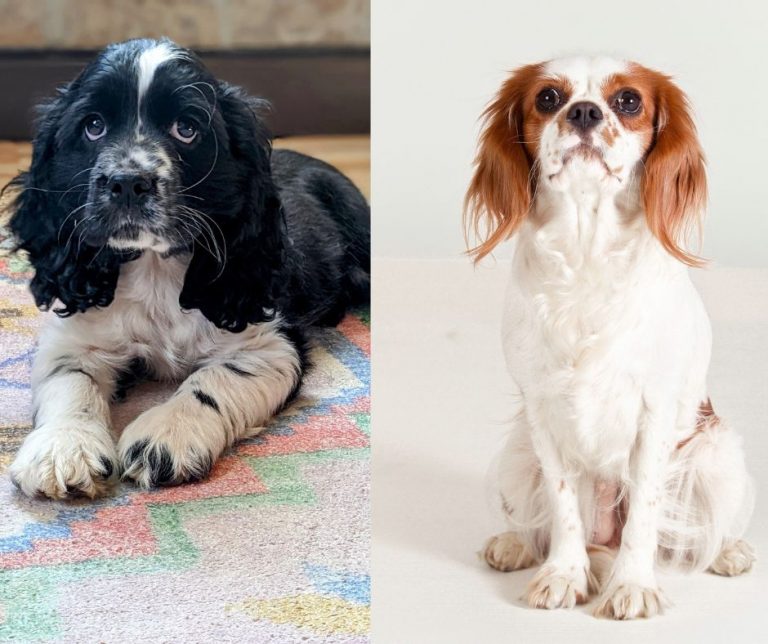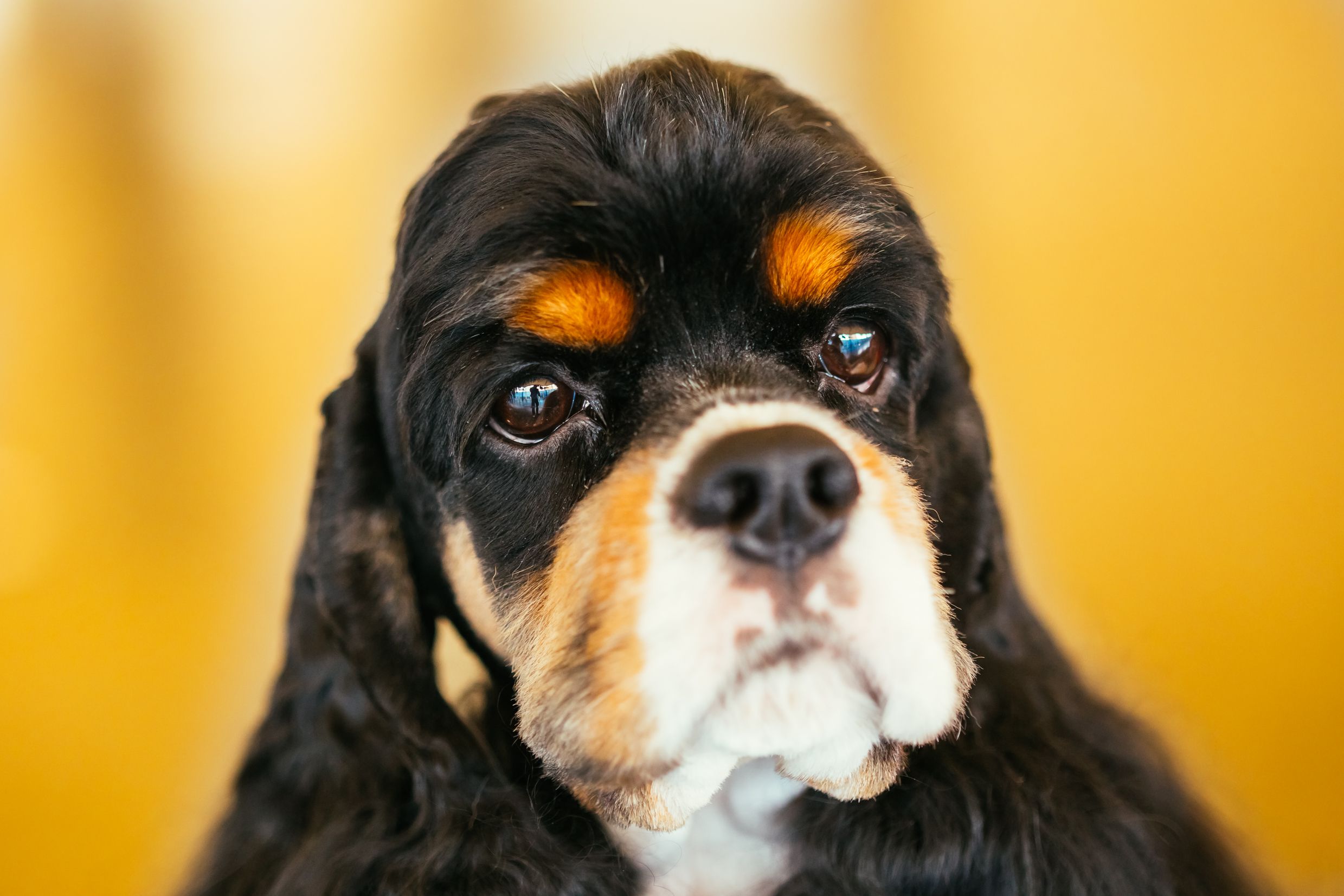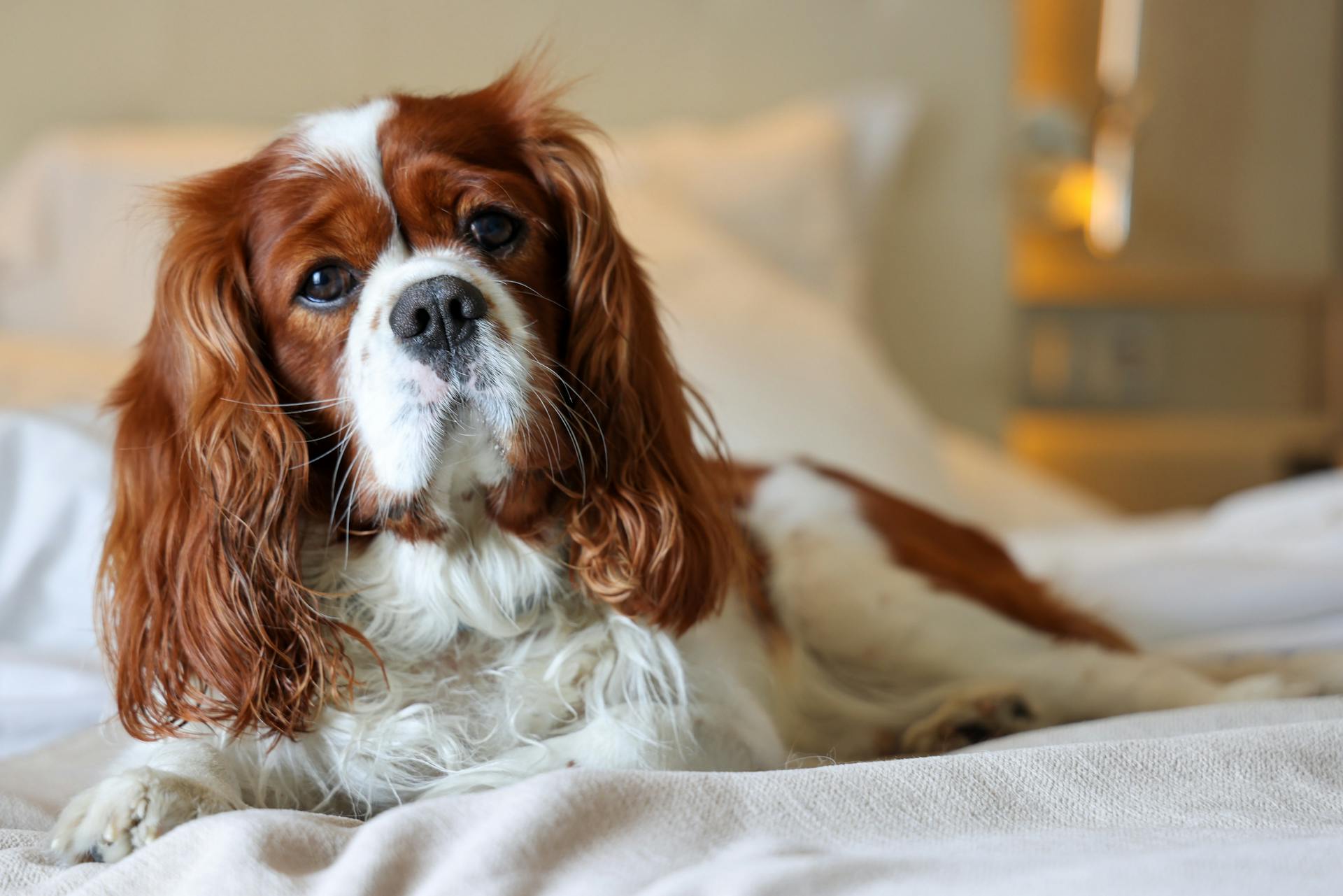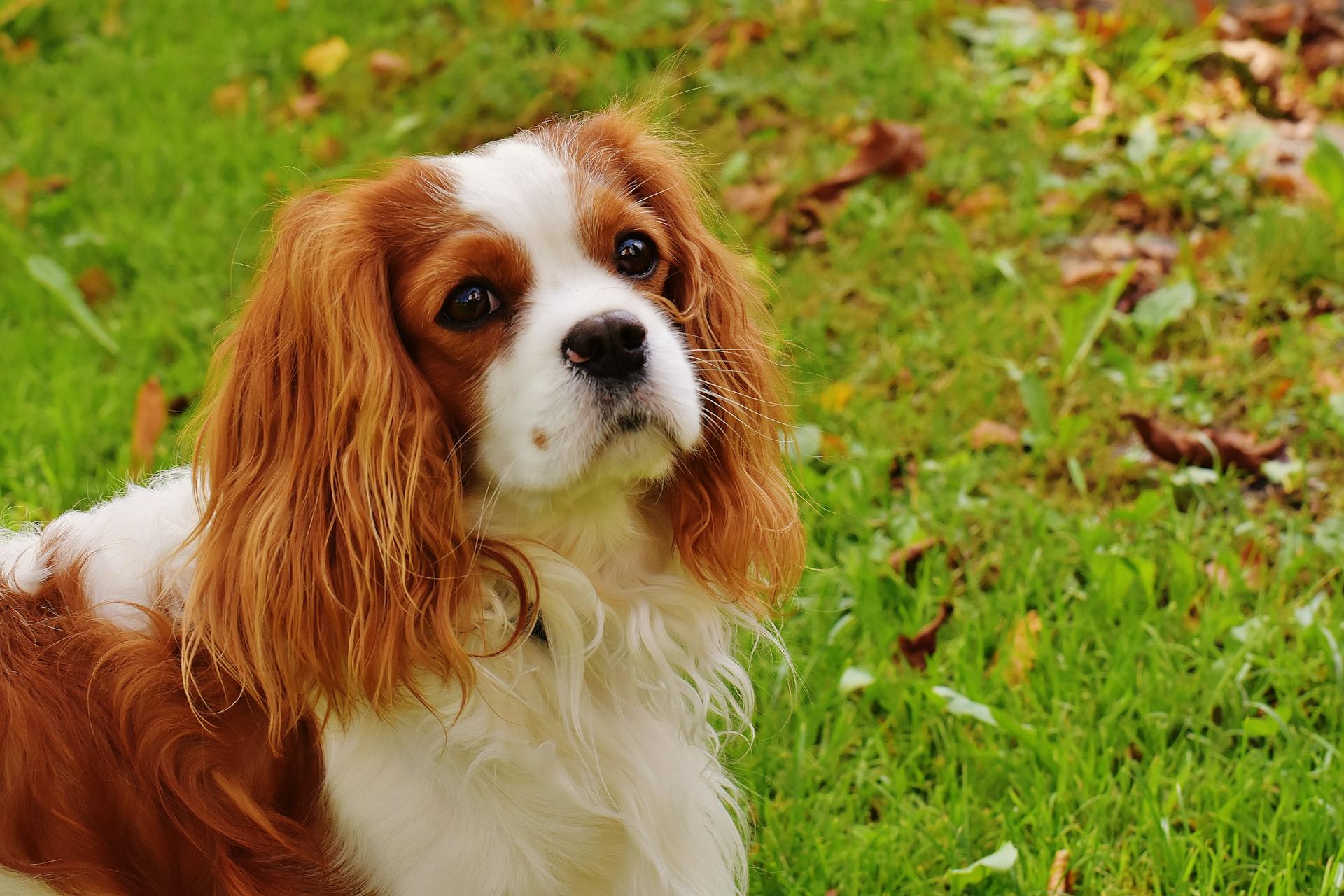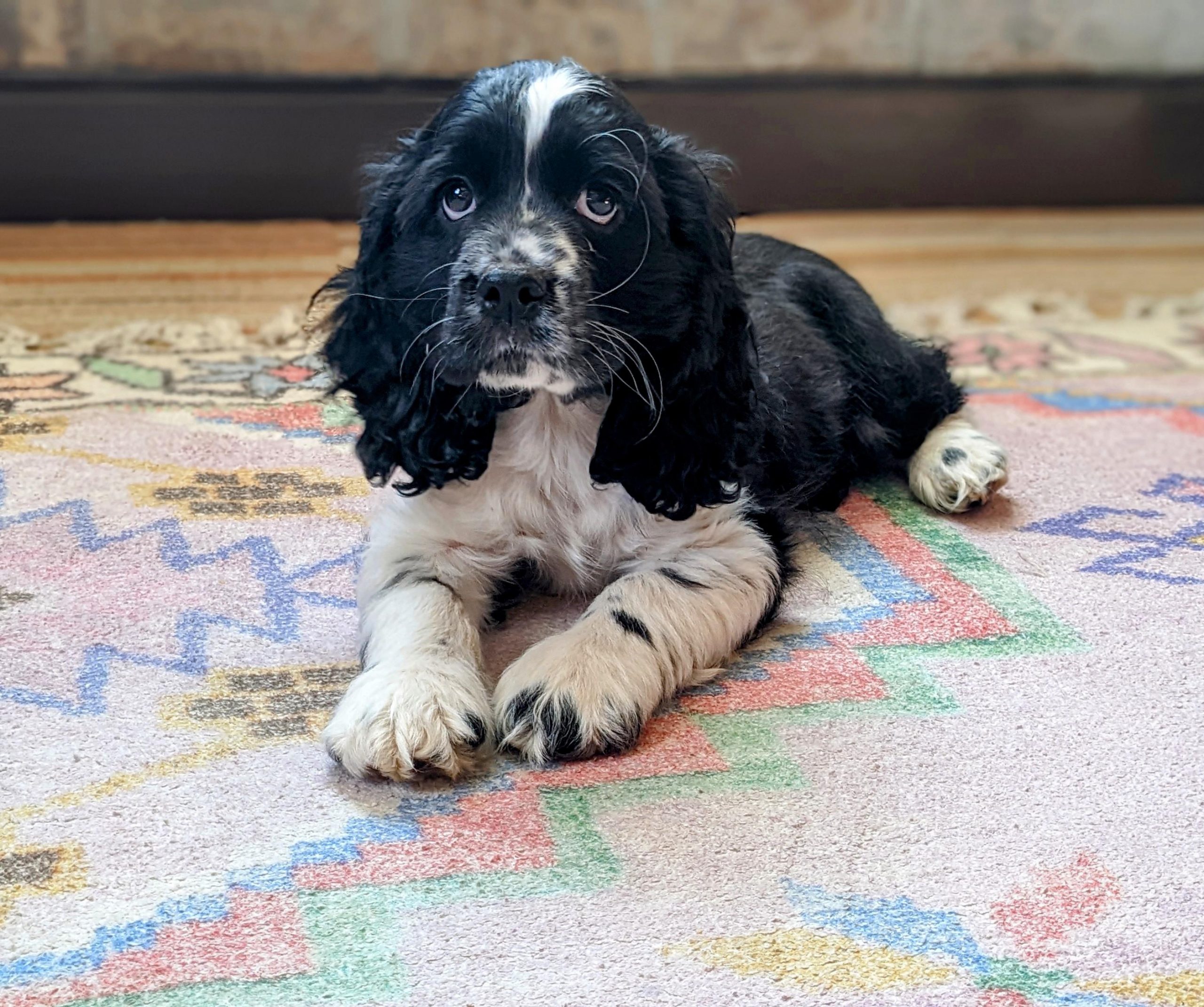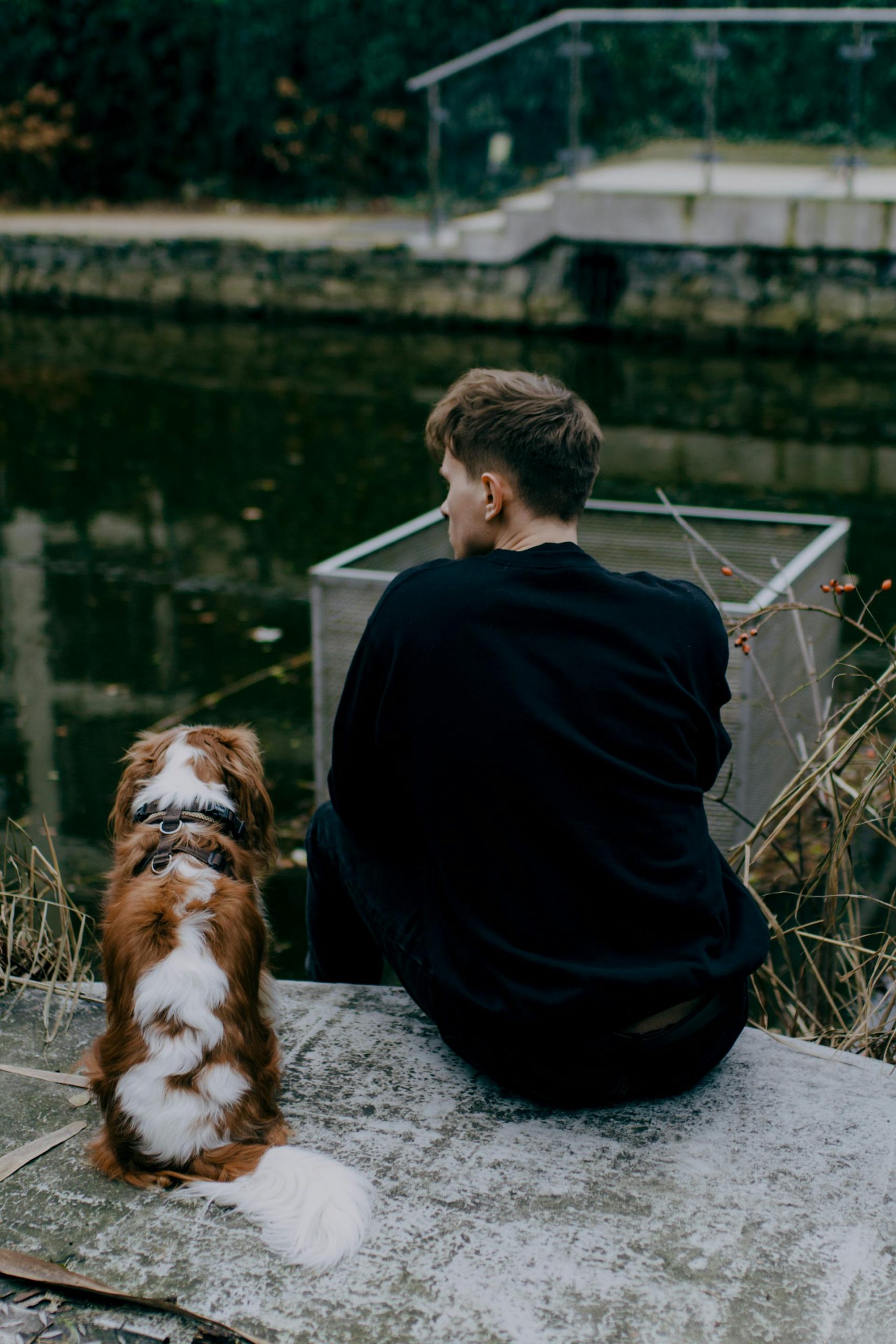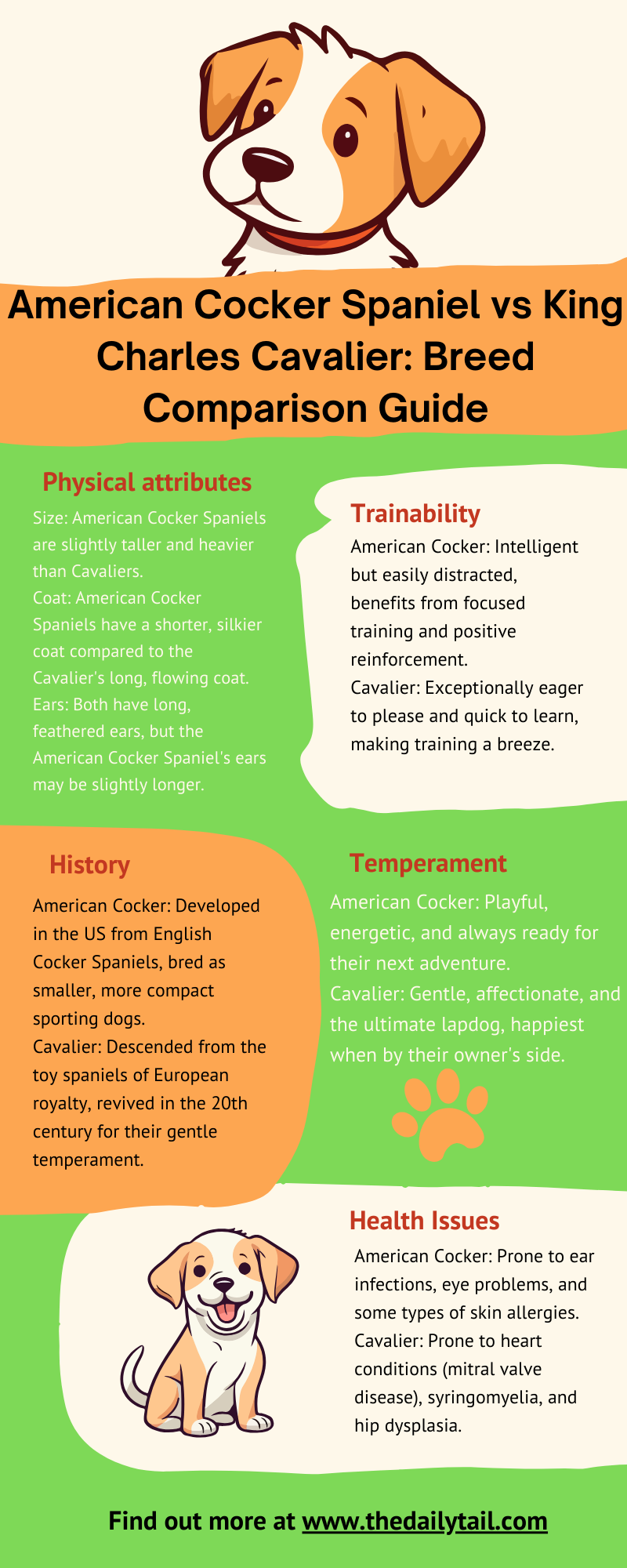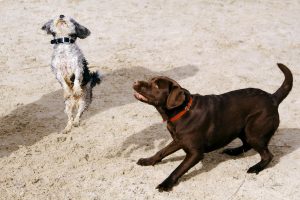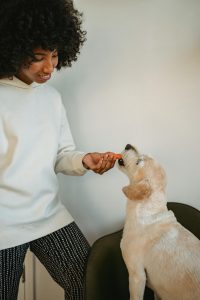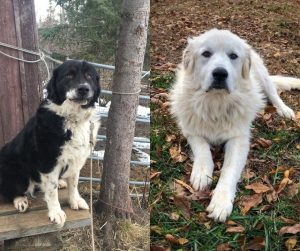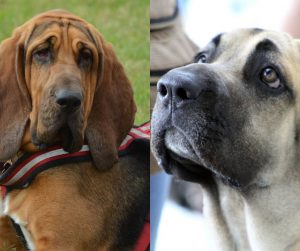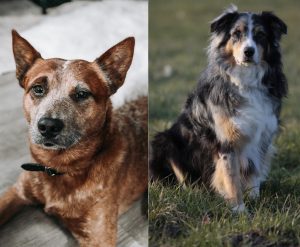As a lifelong dog lover who’s shared my heart with many pets, I’ve come to appreciate the delightful contrasts between these two beloved breeds. If their sweet eyes and floppy ears have captured your attention, let me help you decide which one is your perfect match!
When choosing a canine companion, prospective pet parents often contemplate which breed would best fit their lifestyle. Two breeds that frequently surface in these considerations are the American Cocker Spaniel and the Cavalier King Charles Spaniel. Though they share a royal lineage in their names and possess Spaniel heritage, these breeds exhibit distinct personalities, physical traits, and care requirements that set them apart.
The American Cocker Spaniel, recognized for its lush, wavy coat and endearing expression, is the smallest member of the sporting group. Highly adaptable and known for a merry temperament, this breed thrives in various environments, from apartments to larger homes with yards. They exhibit an eagerness to please their pet owners, which often makes training a rewarding experience.
On the other hand, the Cavalier King Charles Spaniel, with its elegant yet friendly demeanor, also garners much admiration. These dogs are renowned for their gentle and affectionate nature, making them an excellent choice for families and single-person households alike. Cavaliers are relatively easy to train due to their intelligence and desire to interact with their human counterparts. While the two breeds may look similar at a glance, it’s their nuanced differences in size, grooming needs, and exercise requirements that play essential roles in determining the right fit for an individual or family.
Today, we will look at the American Cocker Spaniel vs King Charles Cavalier Spaniel comparison. Let’s go!
Breed Origin and History
The American Cocker Spaniel and the Cavalier King Charles Spaniel have distinct histories that trace back to different origins, each with developments that uniquely shaped their present-day characteristics.
Cocker Spaniel History
The history of the American Cocker Spaniel begins with its ancestors from Spain, bred for hunting game. These spaniels made their way to England and subsequently evolved into a variety of breeds. The smallest of these, adept at hunting woodcock, became known as the Cocker Spaniel. In the United States, the dog breed was further refined to fit American hunting conditions, leading to the ‘American’ designation. The American Cocker Spaniel became recognized as a separate breed by the American Kennel Club (AKC) in the early 20th century.
Among them, we also have to mention the English Cocker Spaniel, English Toy Spaniel, and English Springer Spaniel.
| Country of Origin | Recognized by AKC | Size Evolution |
|---|---|---|
| Spain & England | Early 20th Century | Smaller Size |
Cavalier King Charles Spaniel History
The Cavalier King Charles Spaniel’s roots are royal, with a history that dates back to the aristocracy of England. The Cavalier breed descends from the Toy Spaniels that were favorites of British nobility, including King Charles II, whom the breed is named after. An effort to revive the traditional Toy Spaniel features occurred in the 1920s by enthusiasts, resulting in the Cavalier King Charles Spaniel, which was distinguished from the smaller King Charles Spaniel.
| Notable Enthusiast | Named After | Breed Distinction |
|---|---|---|
| Judith Blunt-Lytton | King Charles II | Revived in 1920s |
Physical Characteristics
When comparing the American Cocker Spaniel vs King Charles Cavalier Spaniel, it is important to consider their size, coat, and distinctive physical features as these aspects largely define their appearance and grooming needs.
Size and Weight
| Breed | Height (inches) | Weight (pounds) |
|---|---|---|
| American Cocker Spaniel | 13.5 – 15.5 | 20 – 30 |
| Cavalier King Charles Spaniel | 12 – 13 | 13 – 18 |
The American Cocker Spaniel typically stands taller and weighs more than the Cavalier King Charles Spaniel. With their more robust frame, they present a sturdy figure, while the latter dog breed exudes an air of delicate regality due to its size.
Coat and Colors
The coat of the American Cocker Spaniel is silky, with medium-length fur that can present in a variety of colors, including but not limited to black, sable, silver, and buff. They often have a luxurious, flowing quality, especially on their ears, chest, abdomen, and legs, where feathering is pronounced.
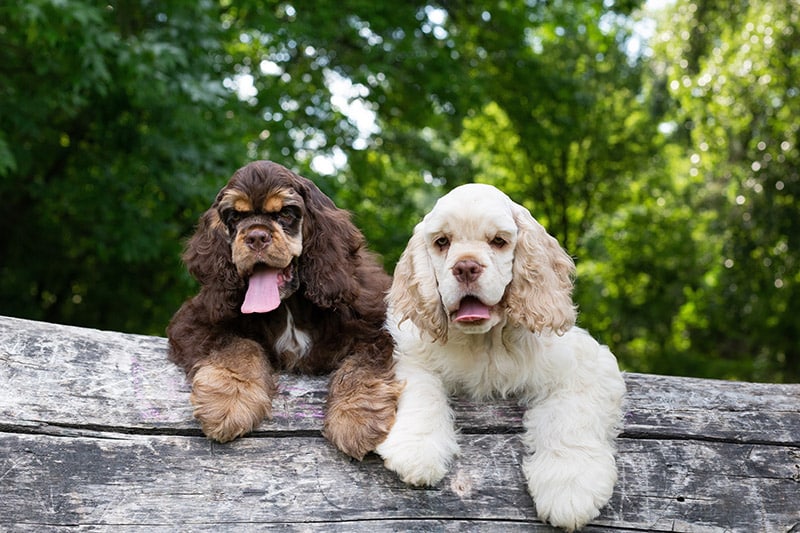
In contrast, the Cavalier King Charles Spaniel has a coat that is also silky and medium-length but comes in specific color patterns such as Blenheim (chestnut and white), tricolor (black/white/tan), ruby (rich red), and black and tan. Both dog breeds require regular grooming to maintain the quality and health of their coats.
Distinctive Features
The ears of the American Cocker Spaniel are distinctive, hanging low and being long and feathered, contributing to their classic, soulful expression. Their tail is typically docked, leaving only a few inches that are carried in line with their back.
The Cavalier King Charles Spaniel is well-known for its large, dark eyes and sweet expression. Their ears are set high but also drape down with significant feathering, enhancing their elegant appearance. They typically sport a long, feathered tail that they carry jauntily above their body line.
Temperament and Personality
When comparing the American Cocker Spaniel and the Cavalier King Charles Spaniel, it’s important to consider that both breeds are known for their affectionate nature and happy disposition, but they exhibit distinct behavioral and social characteristics.
Behavioral Traits
The American Cocker Spaniel typically has a high energy level and is known for its playfulness. With a moderate to high prey drive, they can be very curious and have an instinct to chase. When it comes to temperament, these spaniels are often friendly and adaptable, but they may require more exercise to meet their energy needs.
- Energy Level: High
- Prey Drive: Moderate to High
- Playfulness: Very Playful
- Adaptability: Adaptable with proper exercise
In contrast, the Cavalier King Charles Spaniel is generally more gentle and may carry a slightly more laid-back attitude. They are often affectionate and loving, enjoying a cozy lap as much as playful activities.
- Energy Level: Moderate
- Prey Drive: Low to Moderate
- Playfulness: Playful but can be content with less activity
- Adaptability: Adaptable to various living conditions
Social Characteristics
The American Cocker Spaniel’s disposition is often quite friendly, making them great companions for families. Their social inclinations mean they often integrate well with children and other pets when properly socialized.
- Friendliness: Highly Friendly
- Good with Children: Yes, with socialization
- Good with Other Pets: Generally Good, with socialization
Cavalier King Charles Spaniels are also highly affectionate and friendly. Being gentle and amiable, they make excellent pets for all age groups and tend to be very good around children and other animals.
- Friendliness: Very Friendly
- Good with Children: Yes, typically excellent
- Good with Other Pets: Yes, often very good
Health and Lifespan
When considering the American Cocker Spaniel and the Cavalier King Charles Spaniel, prospective owners should be aware of each breed’s specific health concerns and anticipated lifespans. These factors can significantly impact long-term care and overall experience with the dog.
Common Health Issues
American Cocker Spaniels are prone to several health issues, such as:
- Eye conditions: including cataracts and glaucoma
- Hip dysplasia: a malformation of the hip joint that can cause pain and arthritis
- Ear infections: due to their long, floppy ears trapping moisture and debris
- Hypothyroidism: resulting in a sluggish metabolism
Cavalier King Charles Spaniels are also susceptible to particular health problems:
- Mitral valve disease: a common heart issue in this breed, often leading to heart failure
- Syringomyelia: where cavities form within the spinal cord near the brain
- Episodic falling: a condition causing temporary paralysis
- Patellar luxation: where the kneecap dislocates or moves out of its normal location
Both breeds can suffer from progressive retinal atrophy, an eye condition leading to blindness.
Life Expectancy
American Cocker Spaniels typically enjoy a lifespan ranging from 12 to 15 years. The longevity of these dogs can be maximized with proper care, avoiding obesity, and regular veterinary check-ups to manage health issues early on.
Cavalier King Charles Spaniels often live between 9 and 14 years. With a heart condition prevalent in the breed such as mitral valve disease, timely and vigilant care is crucial in affecting their lifespan. Regular veterinary visits help manage health conditions before they escalate into more serious problems.
Care Requirements
When considering an American Cocker Spaniel or a Cavalier King Charles Spaniel, potential owners should understand that each breed has specific care requirements. These requirements primarily include grooming, activity levels, and training approaches.
Grooming Needs
American Cocker Spaniels have a luxurious coat that requires regular grooming. They should be brushed several times a week to prevent mats and tangles. Owners often opt for professional grooming every 6 to 8 weeks to trim their coats and maintain their appearance. Their ears need particular attention to prevent infections due to their long, floppy nature.
- Cavalier King Charles Spaniels have a coat that is moderate in length and may develop light feathering on their ears, legs, and tail. Regular brushing a few times per week minimizes shedding and keeps their coat healthy. Ears should also be checked and cleaned to avoid potential problems
Exercise and Activity Level
| Breed | Exercise Needs | Barking | Activity Level |
|---|---|---|---|
| American Cocker Spaniel | Moderate to High | Moderate; can be vocal when excited or alert | Enjoys interactive play |
| Cavalier King Charles Spaniel | Moderate | Low to Moderate; less prone to excessive barking | Prefers gentle activities but can enjoy playfulness |
Both breeds require daily exercise to maintain their physical health and mental well-being. American Cocker Spaniels might have higher energy levels and enjoy more vigorous exercises. In contrast, Cavaliers are content with calmer activities, though they too can display bursts of playfulness.
Training and Intelligence
The American Cocker Spaniel and Cavalier King Charles Spaniel both respond well to training, especially when techniques involve positive reinforcement.
- American Cocker Spaniels exhibit high intelligence and trainability, thriving on mental stimulation to prevent boredom. It’s essential to use consistent, gentle training approaches to foster obedience and a strong relationship
- Cavalier King Charles Spaniels are also intelligent dogs, eager to please, and generally easy to train. They benefit greatly from early socialization and training to harness their natural sociability
Neither breed is considered hypoallergenic, and both may not be suitable for individuals with severe allergies. Proper grooming can, however, help manage shedding and dander in the household.
Living Considerations
When considering an American Cocker Spaniel or a Cavalier King Charles Spaniel, potential owners should assess their living environment and family or pet dynamics. Each breed exhibits different preferences and requirements that may influence their adaptability to living spaces and compatibility with families and other pets.
Adaptability to Living Spaces
The American Cocker Spaniel and the Cavalier King Charles Spaniel both adapt well to various living conditions, but there are nuances to consider.
- Cavalier King Charles Spaniel:
- Size: 12-13 inches in height, 13-18 pounds in weight
- Suitable for apartment living due to their compact size
- Their generally calm demeanor allows them to fit comfortably into smaller spaces
- American Cocker Spaniel:
- Slightly larger than the Cavalier, may require more space
- Can adapt to apartment living if provided with adequate exercise
- Their history as hunting dogs means they benefit from access to outdoor spaces for regular activity
Compatibility with Families and Pets
Both breeds are known for their friendly nature, but their interactions with families and other pets can differ.
- Cavalier King Charles Spaniel:
- Known as a companion and toy dog, they thrive in close contact with their owners
- Extremely sociable with both humans and other pets, including family pets
- Their friendly nature makes them great companions for children and seniors alike
- American Cocker Spaniel:
- Equally friendly and companionable, they are known to meld well with family settings
- Proper socialization is key to fostering good relationships with other household pets
- Hunters by breeding, they may exhibit a higher prey drive, requiring supervision around small animals
In essence, while both breeds exhibit similarities in their ability to integrate into family life, their distinctive backgrounds as toy dogs and hunting companions do influence their living considerations.
Breed Comparisons
In comparing the American Cocker Spaniel and the Cavalier King Charles Spaniel, one navigates through a wide array of characteristics that differentiate and unite these charming breeds. This section meticulously examines the traits that set these spaniels apart while also acknowledging their shared qualities.Similarities Between the Breeds
Both the American Cocker Spaniel and the Cavalier King Charles Spaniel are revered for their affectionate nature and loyalty, making them popular as great family pets. They share a heritage of being part of the spaniel family, which historically includes breeds skilled in hunting and retrieving. Additionally, both breeds are recognized by the American Kennel Club, the Cavalier King Charles Spaniel in the Toy Group and the American Cocker Spaniel in the Sporting Group, underscoring their well-established place in the canine hierarchy.
| Similarities | Description |
|---|---|
| Spaniel Family | Both belong to the broader category of spaniels, known for their companionship and soft nature. |
| AKC Recognition | The AKC officially recognizes both breeds, albeit in different groups (Toy and Sporting). |
| Affectionate Temperament | Both breeds are known for their friendly and loving disposition, ideal for families. |
Differences Between the Breeds
When discerning between the two, size represents a clear distinction; the American Cocker Spaniel is typically larger than its Cavalier counterpart. The American Cocker Spaniel typically sports a luscious double coat, which requires regular grooming due to its tendency to mat, whereas the Cavalier King Charles Spaniel has a silkier coat that may carry featherings on its legs, ears, and tail. While both breeds share historical roots in hunting, they have diverged in their modern roles, with the American Cocker Spaniel retaining more of its sporting instincts, and the Cavalier King Charles Spaniel more aligned with the role of a companion pet.
| Differences | American Cocker Spaniel | Cavalier King Charles Spaniel |
|---|---|---|
| Size | Larger in size. | Smaller and lighter. |
| Group Classification | Categorized in the AKC Sporting Group. | Placed in the AKC Toy Group. |
| Coat Type | Possesses a thick double coat prone to matting. | Features a silky coat with featherings. |
| Typical Use | Retains stronger sporting and hunting instincts. | More commonly serves as a companion dog. |
Practical Information for Owners
When considering the addition of an American Cocker Spaniel or a Cavalier King Charles Spaniel to one’s family, potential owners must weigh price and budget, as well as understand each breed’s standing with dog recognition organizations such as the American Kennel Club (AKC).Price and Budget Considerations
American Cocker Spaniel:
- Price Range: Typically, the cost of an American Cocker Spaniel puppy ranges from $800 to $2,500, depending on factors such as pedigree and breeder reputation
- Budget for Care: Owners should plan for expenses beyond the initial purchase, including veterinary care, grooming, food, training, and potential health issues inherent to the breed
Cavalier King Charles Spaniel:
- Price Range: A Cavalier King Charles Spaniel puppy’s price can vary, generally falling between $1,000 to $3,500
- Budget for Care: Ongoing costs are similar to those for an American Cocker Spaniel; however, Cavaliers may require additional budgeting for health care, as they are prone to specific congenital conditions
Breed Popularity and Recognition
- AKC Popularity: This breed consistently ranks within the top 30 of the AKC’s most popular breeds
- Recognition: Recognized by the AKC, known for being affectionate and adaptable, the breed has a well-established prominence in the United States
Cavalier King Charles Spaniel:
- AKC Popularity: Cavaliers are similarly popular, often appearing in the AKC’s top 20 most popular breed list
- Recognition: As an AKC-recognized breed, the Cavalier King Charles Spaniel is celebrated for its affectionate nature and is a favored choice for families and individuals alike

